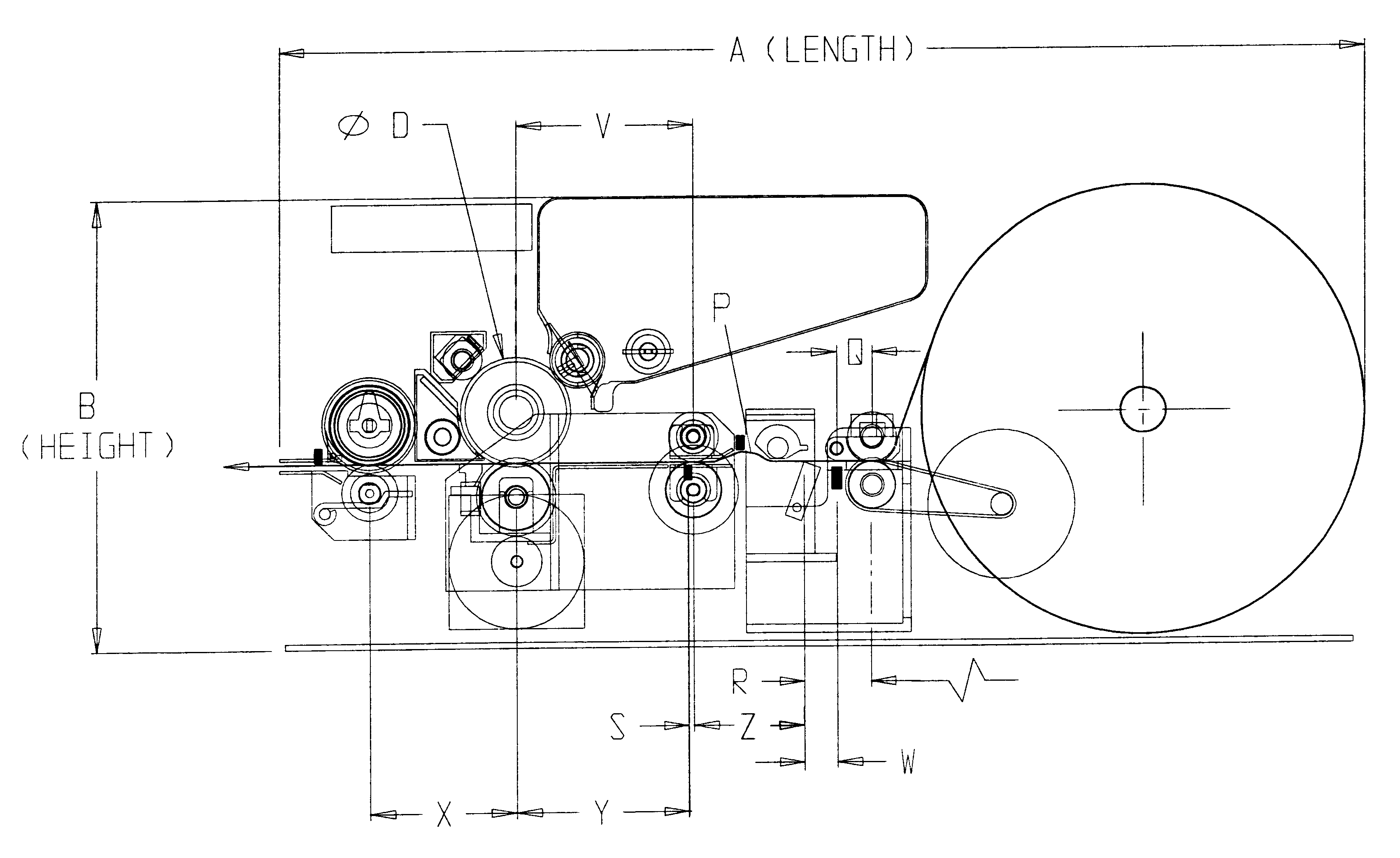On demand media web electrophotographic printing apparatus
a technology of electrophotographic printers and web pages, applied in electrographic processes, instruments, transportation and packaging, etc., can solve the problems of increasing cost, reducing productivity, and reducing the accuracy of registration on lin
- Summary
- Abstract
- Description
- Claims
- Application Information
AI Technical Summary
Benefits of technology
Problems solved by technology
Method used
Image
Examples
Embodiment Construction
The improved Registration Apparatus 6 is shown in FIG. 1. The Media Feed Stepper Motor 11 is connected by Timing Belt 61, or the like, to the Lower Media Feed Roll 12 of the Media Feed Roll Unit 67. The Lower Media Feed Roll 12 is in spring-loaded (not shown) engagement with the Upper Media Feed Roll 13 to form a Media Feed Roll Nip 41 gripping the Media Web 33, in a channel with lateral media edge guides (not shown), extending from the Media Feed Roll 10 (See FIG. 3). The Media Web 33 extends beyond a Media Feed Sensor 14 to the Cutter 63 comprising a Knife Edge 15 and an Anvil 16, or other known cutter unit. The Cutter 63 is located between the Media Feed Roll Unit 67 and the Registration Roll Feed Unit 59. The Main Stepper Motor 27 is connected by the Timing Belt 61 to a Registration Roll Clutch 55 connected to the Lower Registration Roll 18 of the Registration Roll Feed Unit 59. The Lower Registration Roll 18 is in spring-loaded engagement with the Upper Registration Roll 19 to ...
PUM
| Property | Measurement | Unit |
|---|---|---|
| diameter | aaaaa | aaaaa |
| diameter | aaaaa | aaaaa |
| width | aaaaa | aaaaa |
Abstract
Description
Claims
Application Information
 Login to View More
Login to View More - R&D
- Intellectual Property
- Life Sciences
- Materials
- Tech Scout
- Unparalleled Data Quality
- Higher Quality Content
- 60% Fewer Hallucinations
Browse by: Latest US Patents, China's latest patents, Technical Efficacy Thesaurus, Application Domain, Technology Topic, Popular Technical Reports.
© 2025 PatSnap. All rights reserved.Legal|Privacy policy|Modern Slavery Act Transparency Statement|Sitemap|About US| Contact US: help@patsnap.com



